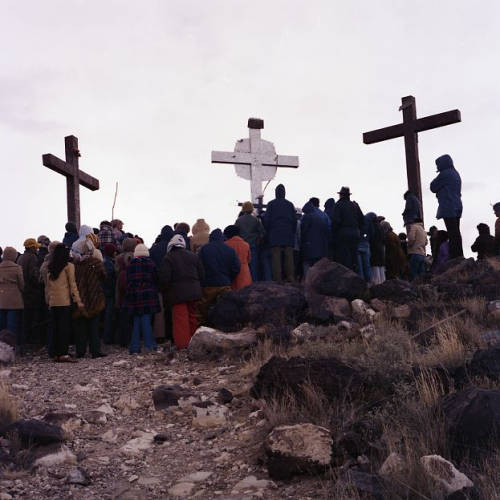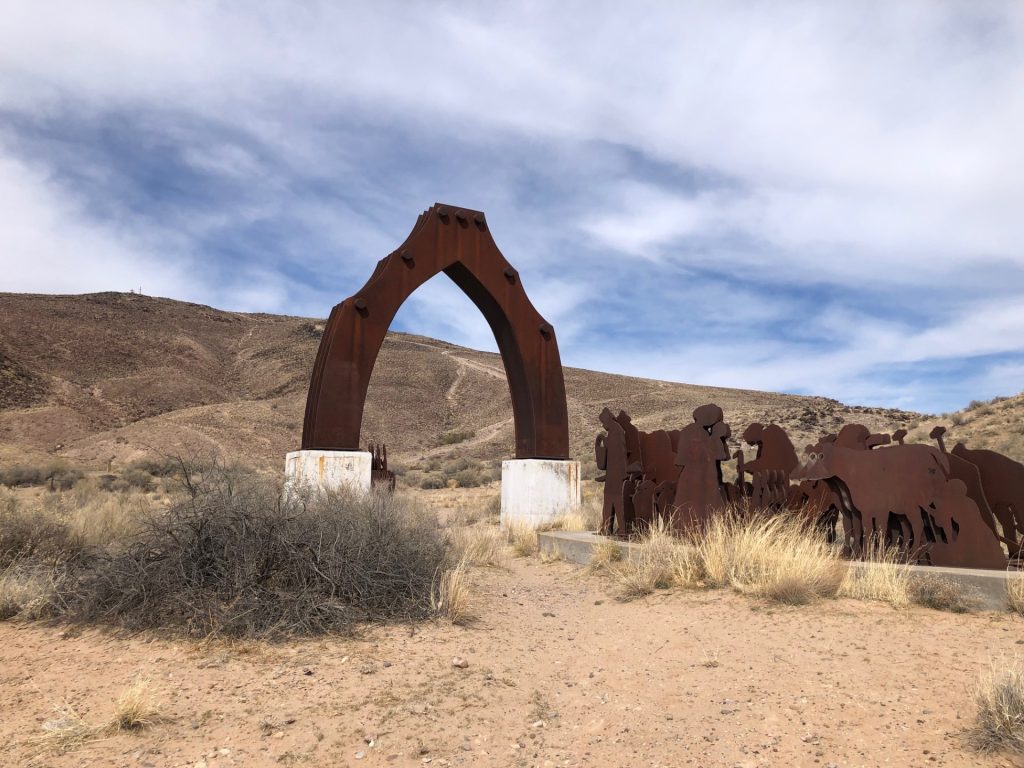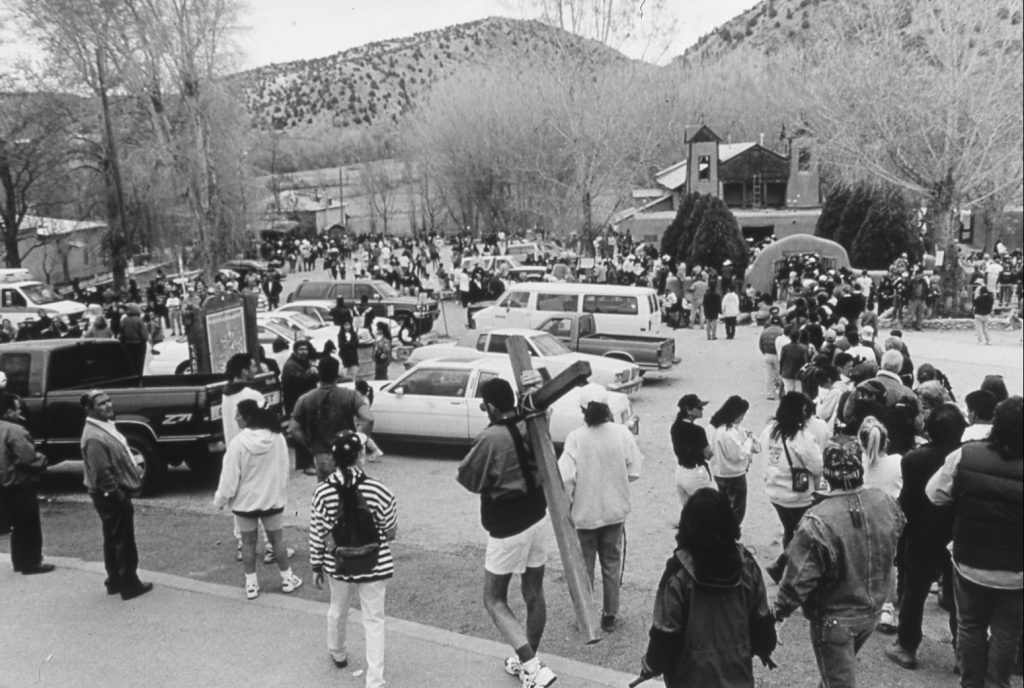
Courtesy of Los Lunas Museum of Heritage and Arts
New Mexico has several well-known Easter pilgrimage sites reflecting its Hispano-Catholic roots. While Chimayó may be the most famous, it’s worth mentioning Tomé Hill, south of Albuquerque, and Mount Cristo Rey in Sunland Park, NM.
Tomé Hill
Tomé Hill is a high point about 30 miles south of Albuquerque in Valencia County on the east side of the Rio Grande River and five miles southeast of Los Lunas. The prominent high spot has attracted travelers for thousands of years and was once a major landmark along El Camino Real de Tierra Adentro. Petroglyphs (rock art) along the route speak to even earlier significance as a possible spiritual site for Native and early Hispano peoples. The current Christian pilgrimage tradition started as a passion play in Tomé Plaza in 1948 and later evolved into a procession and ascent up Tomé Hill with members of the Hermanos Penitentes (Penitent Brotherhood), a lay Catholic fraternity, carrying and then erecting a cross on the summit. Today, visitors can see from below several crosses that dominate the summit view, hike to the top, or participate in the Good Friday pilgrimage.

Learn more:
https://www.nps.gov/articles/000/new-mexico-el-cerro-de-tome.htm
Los Lunas Museum of Heritage and Arts has nearly 60 images from the 1970s online: https://nmdigital.unm.edu/digital/collection/loslunas/search/searchterm/tome%20hill/page/2
Mount Cristo Rey
On the far southern border with Mexico, in Sunland, NM, Sierra de Cristo Rey, or Mount Cristo Rey, is home to a 29-foot-tall limestone statue of Christ with his arms outstretched on a cross. The mountain straddles the US and Mexico border and serves as a pilgrimage site for thousands who travel from El Paso, TX, Southern New Mexico, and Chihuahua, Mexico. To reach the statue at the top, pilgrims ascend a 2.2-mile gravel path. The monument was constructed in 1939 by sculptor Urbici Soler, who donated his time and money to fund a large part of the construction. The cross has been continuously standing and maintained by volunteers since October 29, 1939. New Mexico, Texas, and Chihuahua, Mexico are all visible from the top.
Learn more:
http://www.mtcristorey.com/
This 2018 YouTube video provides a great visual: https://www.youtube.com/watch?v=Urpg0g0uVUs
Tomé Hill is open year-round, and Mount Cristo Rey is open on a limited basis for special events, but they are both abuzz with the faithful, as well as the curious, during annual Good Friday pilgrimages. If you have walked either route or know of other pilgrimage sites in New Mexico, let us know!

If you’re in Santa Fe be sure you see our new exhibition opening April 12, Chimayó: A Tradition of Faith to learn more about the state’s largest and most known pilgrimage site: https://nmhistorymuseum.org/exhibition/details/6558/chimayo-a-tradition-of-faith
Mark Dodge
Curator of Southwest Memories
Mark.Dodge@dca.nm.gov


















